
IF you want a walk in Loubejac, then a simple, easy route to take is the Boucle des Granges that will take you around two hours.
It takes you through the chestnut trees, lets you stop for photos across the fields and offers you the chance to unroll a blanket and sit in the woods if you want to take a break.
The walk starts from the Eglise Saint-Pierre-és-Liens, in Loubejac, and obviously it being a loop lets you go either way.
Most maps will ask you to start with the mairie on your back and go counter-clockwise, but I’ll take you the other way and set off with the church to you back.
Past the mairie and cemetery

If you walk to the right of the mairie and down a short path you will come out on the road that loops round the village.
Turn right and you will pass the small cemetery of Loubejac and continue down the road to where the valley bottom flattens out.
Keep an eye out for cars on the bends here, but most traffic will be going slowly up and down the hill.
Into the chestnut grove

You will come to a t-junction with signposts for Villefranche, Sauveterre and Montcabrier and a yellow capped post to you left and a similar one ahead of you.
Cross over the road just keeping an eye out for traffic as there are no road markings and a pile of gravel has accumulated at the junction.

As you head up the path into the woods you will begin to see a small copse of chestnut trees, and when I walked a few circular bales of hay.
Keep to the right and walk along the edge of the field towards a path that goes through the woods.
Solar panels and view

A short distance along and you will walk out of the woods into a small field, where you will see a barn with solar panels across the roof.
In the past the barn was used to dry tobacco that was once grown in the surrounding fields, now it is a way to make good use of a building that is little used.
Over to your left you will see the hill rise, the mobile phone mast, and the collection of houses that make up Le Garrit.
Continue across the field and aim for the right hand side of the barn and the large cream coloured house, this brings you out on a quiet road where you turn right.
Down towards Tautal
Continue along the road towards a single storey house, the fields to your left and right were where tobacco was once grown, now it is often sunflowers.
Growing tobacco was a very tough way to earn an income and took a great deal of time both in the fields and when drying, any you see being grown today is often used for medical purposes.
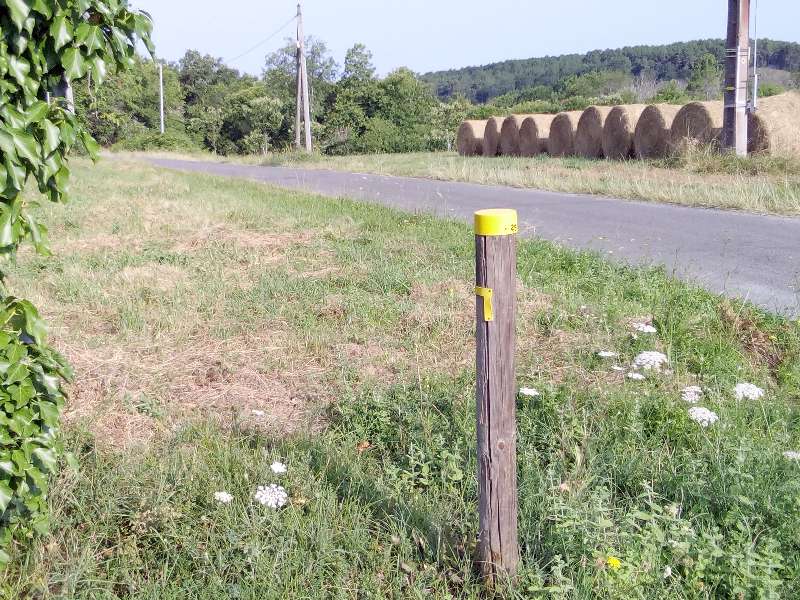
When you arrive at the junction turn left and the road will slowly slope down towards Tautal, again just be aware of any traffic.
As you walk down the small collection of houses called Tautal will open up to you and you take the right turn at the signpost towards the buildings.
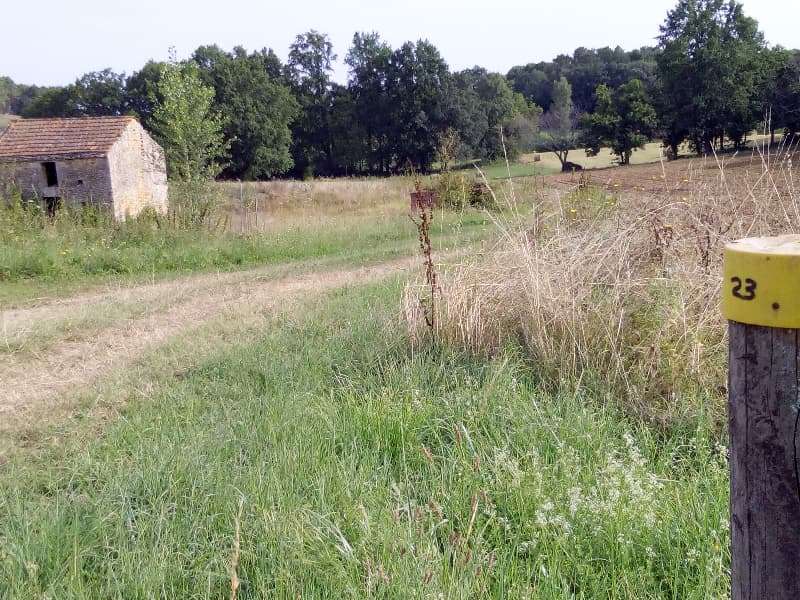
As you walk down the quiet track with the lovely stone buildings on your left, you will see a small stone barn that is empty, head towards it and bear right into the fields.
Chestnut trees and Les Granges
The path continues with a turn to the left, and one to the right, and before you the path begins to rise and heads between two areas where young chestnut trees have been planted,
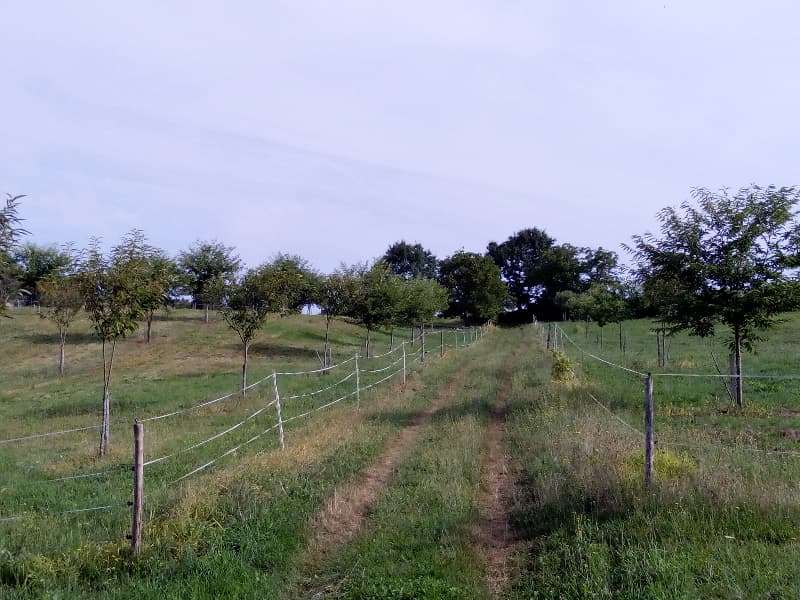
Continue along the path as it rises and when you get to the top you bear left and you will see a collection of buildings made up of small barns and houses, with fruit trees and a vegetable patch also present.
This is Les Granges and the place that gives this pleasant walk its name, so continue walking with the buildings to your left and you will see a large signpost as you come out onto a quiet road.
A new loop if you choose

At this point you could join the Boucle des Griffoulieres that is approximately 4 km and would add about an hour to your walk.
The loop is clearly signposted and takes you down towards a small lake that is used for irrigation and then back into the woods, with a view west from a high point.
Eventually you will come back to this point and continue on with the rest of the Boucle des Granges.
Photo stop across the fields

Turn right at the large signpost and walk on up the road, again very little traffic uses it but to your right the view opens up across the fields and you can see across to Le Garritt again.
It is a lovely spot to take a photograph and obviously offers a different view depending upon the time of year you are walking by.
Road to Villefranche-du-Périgord
Walk on up the road as it rises, there is no shade here so be aware especially if the temperature increases in the afternoon.
You pass a recently restored stone house and come to a t-junction where you want to turn left.
This is the road to Villefranche-du-Périgord, but again drivers will slow down and give you a wide berth, and so continue along past the recycling bins.
Learn about the woods

A short distance along you will see on your right a yellow, gravel path with a collection of posts at the junction.
This is your next turn into the woods, where you will see similar posts that explain how the chestnut tree both fed and kept people warm in the past.
How the pine trees that you see are used in industry and how to tell if the chestnut trees in a section are for consumption or for turning into products such as flooring.
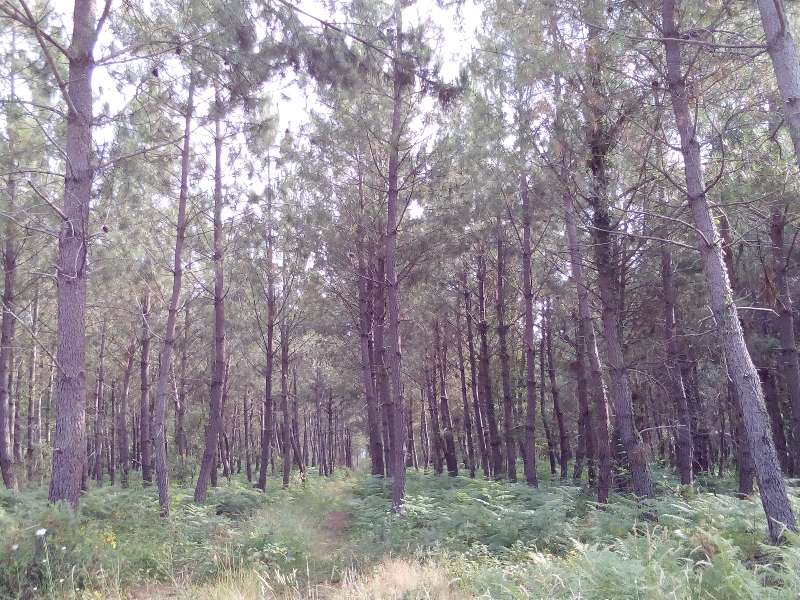
Continue walking along this path, that can get a bit muddy after a downpour, all the way to the top where again you will see a direction post and information panel – turn right here.
Back to Loubejac
Continuing along this path through the woods, at one point you will see an established copse of chestnut trees, that depending upon the time of year could be heavy with nuts.
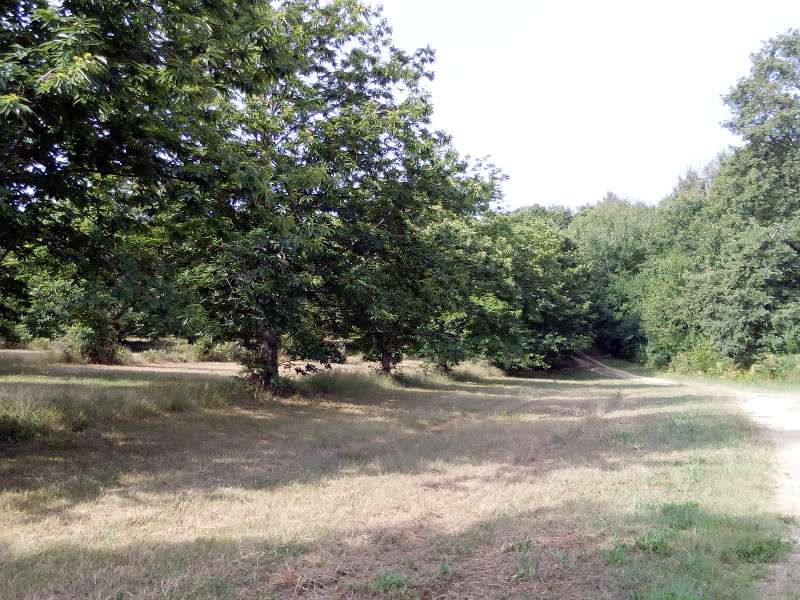
Past the chestnut trees and you will see a small collection of buildings for storing farm equipment and a workshop, there was a giant cèpe mushroom carved out of wood when I walked by.
You will also pass an eye-catching building that is made from large logs, that has aged over the years and is used by a local forestry business.

A beautiful stone building will also be on your right and then as the path rises you meet the road and turn right towards Loubejac and the church, bringing you back to your start point.
Another easy walk in the area is in the neighbouring Lavaur, where you can discover streams and ferns in the footsteps of the trois évêques.